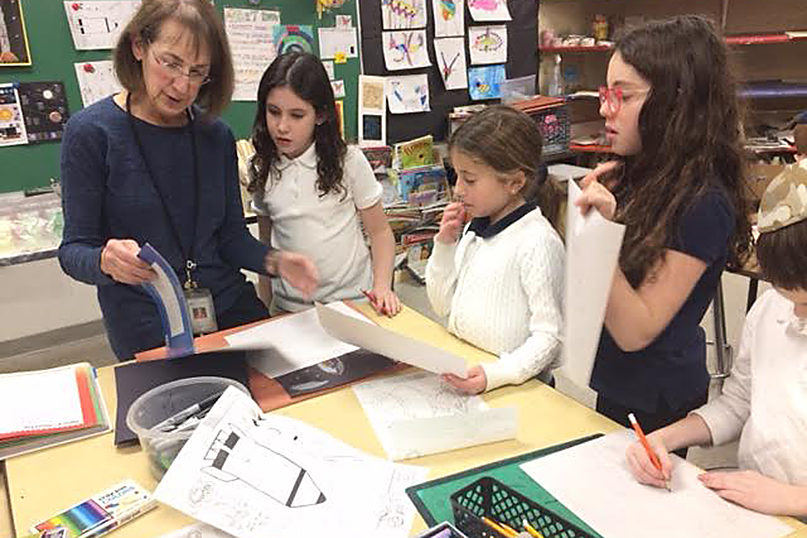
It is 1:40 on a Thursday afternoon and third graders at Bi-Cultural Hebrew Academy are filing into the school’s art room and taking their seats on the high stools that surround several over-size square tables. Spread atop each table are open boxes filled with Cray-Pas Artists Pastels, as well as blank sheets of drawing paper and books with colorfully illustrated photos of the solar system.
The solar system?
“Right now, in science class, our third graders are learning about the solar system,” explains BCHA art teacher Pat Wetzler. “So, I’m reinforcing that lesson with an art exercise. It helps students understand and retain what they’re learning in one class if we take the subject and apply it to other disciplines.”
While that may not be the trajectory of curricula at other schools, it is an approach to academics that has become commonplace at the Stamford day school which is a 2017 National Blue Ribbon School of Excellence.
“It’s an example of our interdisciplinary approach to learning here at Bi-Cultural,” says Ms. Wetzler.
And it isn’t the first time the dedicated art teacher has created a lesson in step with what students are learning in other classes. For example, when the second grade studied owls, students created charcoal drawings of owls; when Native American history was a topic of study in the third grade, students crafted hand-painted clay replicas of canoes — complete with Native American figures at the helm; for the fourth-grade history unit on immigration, Ms. Wetzler had them recreate the pop art portrait of the Statue of Liberty by artist Peter Max.
As a testament to the creativity that arises from these interdisciplinary lessons, the students’ art projects line the walls and fill a case outside the art room.
For her lesson on the solar system, Ms. Wetzler gathered all sorts of visual and written aids. She then instructed students to create drawings related to the solar system. The only rule: make it true to form.
“Use your creativity,” she told students, “but don’t make it up. Use the references that are on the table; look at the photos to find out what colors the planets are; find out how to draw the rings around Saturn. Understand and know what you’re drawing.”
The students then let their imaginations take flight. First, they completed a prototype of their work on a sheet of white paper, then showed Ms. Wetzler their so-called “sloppy copy” for comments. Once approved, they were handed a sheet of black construction paper to produce their final drawing. Today, the drawings are on proud display outside their classroom.
“I feel this is so important because in the years to come students might not remember all the exact facts and figures, but they will remember the experience of learning about the subject and that reinforces the information,” says Ms. Wetzler.
“My ‘End-of-Year Art Show’ follows the same philosophy,” she notes. “Each grade imitates an artist and they get to produce a work of art in the style of that artist, and not just study about it. Then, when they go to an art museum and see the artist’s work, they remember that they did it, too.”
This is learning at its finest, says BCHA Head of School Jacqueline Herman.
“Interdisciplinary learning helps students learn by making connections between ideas and concepts across the disciplines,” she explains. “Simply put, it brings ideas together, which makes for more meaningful learning and deepens the learning experience.”
CAP: Pat Wetzler reviews the ‘solar system’ artwork of Bi-Cultural Hebrew Academy third-graders (l to r) Mickey Lewitan, Molly Wirgin and Olivia Breiner.







 Southern New England Jewish Ledger
Southern New England Jewish Ledger












